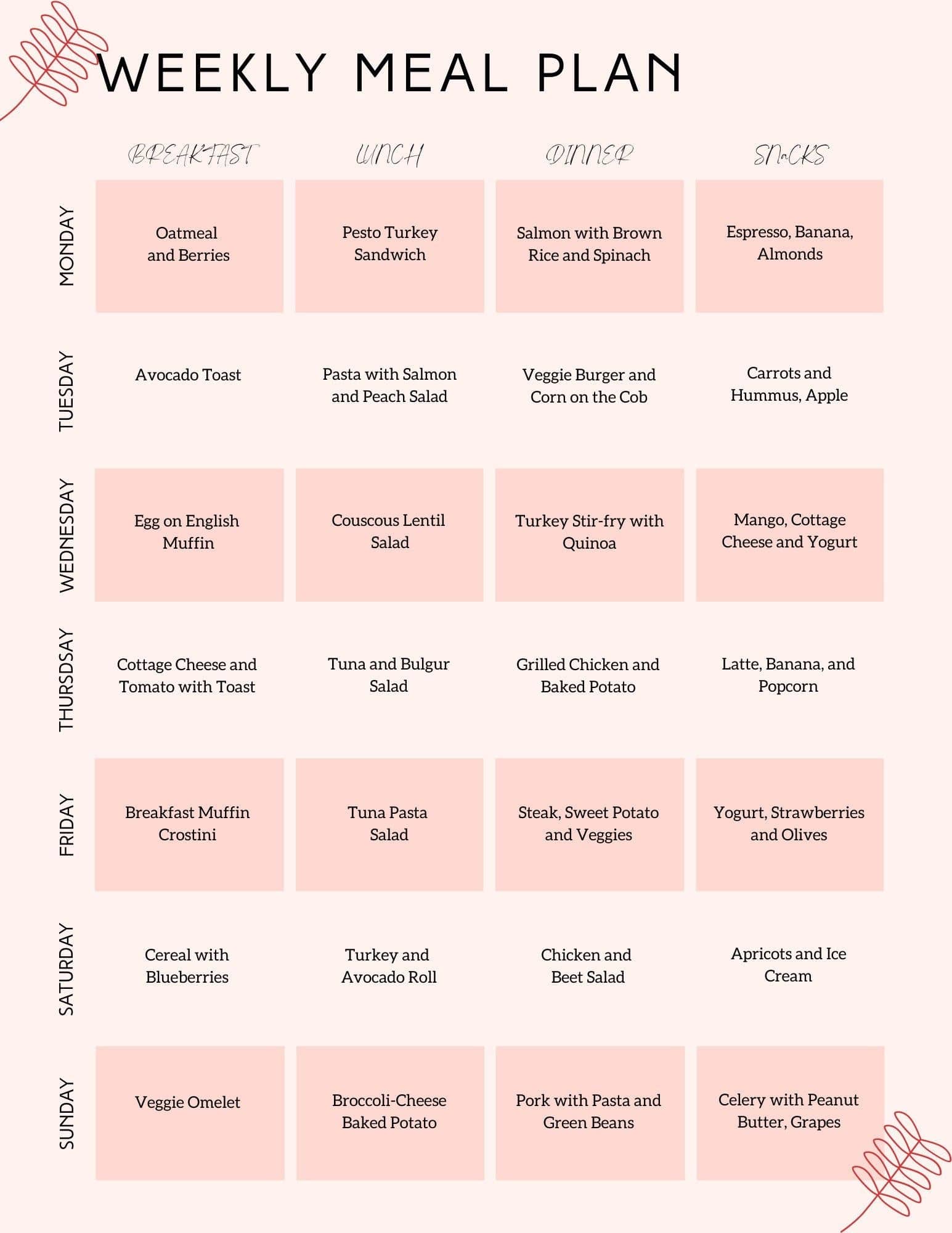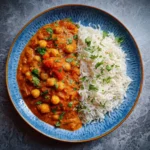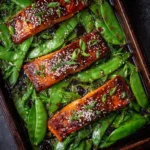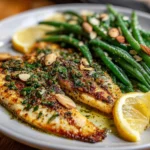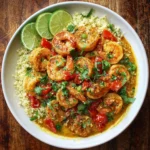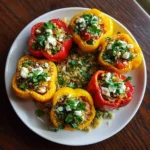A Comprehensive 7-Day Meal Plan for a Healthier, Happier YouWelcome to your ultimate guide to healthy weekly meal planning!
If you’ve ever wondered how to balance delicious flavors, convenient preparation, and nutritious meals all in one place, this blog post is for you. Below, you’ll find a 7-day meal plan featuring breakfast, lunch, dinner, and snack ideas. We’ll discuss the benefits of each dish, easy ways to prepare them, and how this plan can fit seamlessly into your busy schedule. By the end of this post, you’ll have a clear roadmap for creating healthier meals throughout the week while saving time and energy.
Disclaimer: The information provided is for general informational purposes and does not constitute medical advice. Always consult with a healthcare professional or a registered dietitian before making significant dietary changes.
Table of Contents
- Why Weekly Meal Planning Matters
- Key Benefits of Following a Structured Meal Plan
- 7-Day Meal Plan Overview
- Snack Choices and Healthy Alternatives
- Meal Prep Tips for a Stress-Free Week
- Balanced Nutrition: How to Make the Most of This Plan
- Frequently Asked Questions (FAQ)
- Conclusion
1. Why Weekly Meal Planning Matters
Meal planning offers a structured approach to healthy eating. It removes the guesswork from your daily routines and ensures every meal you make contributes to your overall well-being. Here are some top reasons weekly meal planning is beneficial:
- Time Savings: By planning in advance, you spend less time each day deciding what to cook.
- Cost-Effective: Buying only what you need means fewer impulse purchases and less food waste.
- Balanced Nutrition: You can ensure each meal provides essential nutrients by carefully selecting healthy ingredients.
- Stress Reduction: Having your meals organized means fewer last-minute grocery runs and cooking panics.
2. Key Benefits of Following a Structured Meal Plan
- Portion Control: When you plan meals, you can better manage portion sizes, which is helpful if you’re aiming to maintain or lose weight.
- Dietary Variety: Incorporating different protein sources, vegetables, and grains prevents diet boredom and boosts your nutrient intake.
- Healthier Food Choices: When a plan is in place, you’re less likely to reach for quick junk food or high-calorie snacks.
- Supports Fitness Goals: A balanced approach to proteins, carbohydrates, and healthy fats can support muscle growth, increased energy, and improved recovery.
3. 7-Day Meal Plan Overview
This meal plan is designed to help you explore diverse food choices throughout the week. Each day features a breakfast, lunch, dinner, and snack selection to ensure you stay satisfied and energized.
Monday
- Breakfast: Oatmeal and Berries
Oatmeal is high in fiber, helping to stabilize blood sugar levels. Top it with fresh berries for an antioxidant boost. Feel free to add a sprinkle of flax or chia seeds for extra omega-3 fatty acids. - Lunch: Pesto Turkey Sandwich
A pesto turkey sandwich combines lean protein with the fresh flavors of basil and garlic. Opt for whole-grain bread to boost your intake of fiber and B vitamins. Consider adding spinach, tomato, or bell peppers for extra nutrients. - Dinner: Salmon with Brown Rice and Spinach
Salmon is an excellent source of omega-3 fatty acids, supporting heart health and reducing inflammation. Brown rice and spinach round out the meal with complex carbohydrates and vitamins such as vitamin K and iron. - Snacks: Espresso, Banana, Almonds
A small espresso can give you a gentle energy boost. Pair that with a banana for quick-digesting carbohydrates and almonds for healthy fats and protein.
Tuesday
- Breakfast: Avocado Toast
Avocados provide healthy monounsaturated fats. Toast up whole-grain bread and top it with sliced avocado, a sprinkle of salt, pepper, and maybe a drizzle of extra virgin olive oil or lemon juice. - Lunch: Pasta with Salmon and Peach Salad
For pasta, choose a whole-grain variety. Salmon is versatile, rich in essential fatty acids, and pairs well with the natural sweetness of peaches in a salad. The fruit adds a summery, refreshing twist to this meal. - Dinner: Veggie Burger and Corn on the Cob
Go for a vegetable-based patty made from beans, lentils, or quinoa. Serve it on a whole-wheat bun with lettuce, tomato, and your favorite sauce. Corn on the cob complements this dinner with a good dose of fiber and essential minerals. - Snacks: Carrots and Hummus, Apple
Carrots and hummus provide a savory, nutrient-dense snack. Apples are high in fiber and water content, which promotes a feeling of fullness.
Wednesday
- Breakfast: Egg on English Muffin
Eggs are packed with protein and essential amino acids. An English muffin (preferably whole-grain) gives you slow-releasing carbohydrates. Add some spinach or a slice of cheese for extra flavor. - Lunch: Couscous Lentil Salad
Couscous is a light grain that cooks quickly and pairs nicely with lentils, which are an excellent source of plant-based protein. Toss in bell peppers, cucumbers, onions, and a light vinaigrette to brighten the dish. - Dinner: Turkey Stir-Fry with Quinoa
Lean ground turkey or turkey breast strips cooked in a stir-fry with colorful vegetables (broccoli, carrots, zucchini) over a bed of quinoa will keep you satisfied. Quinoa’s high protein content complements the lean turkey nicely. - Snacks: Mango, Cottage Cheese, Yogurt
Mango adds a sweet tropical flair, while cottage cheese and yogurt both provide calcium and protein. You can choose a low-fat variety to reduce saturated fat intake.
Thursday
- Breakfast: Cottage Cheese and Tomato with Toast
Cottage cheese offers a high protein, low-fat start to your day. Pair it with fresh tomato slices for flavor. Whole-wheat toast helps keep you full longer. - Lunch: Tuna and Bulgur Salad
Bulgur is a whole grain with a slightly nutty taste. Combine it with tuna (rich in omega-3s) and add diced cucumbers, tomatoes, and herbs like parsley or dill. This salad is perfect for meal prep because it stays fresh in the fridge. - Dinner: Grilled Chicken and Baked Potato
Grilling chicken helps maintain its leanness. Baked potatoes are an excellent source of potassium. Top your potato with Greek yogurt for extra protein instead of high-fat sour cream. - Snacks: Latte, Banana, Popcorn
A latte (with low-fat or plant-based milk) can be a comforting pick-me-up. Bananas supply potassium, and popcorn (air-popped and lightly salted) offers a crunchy, low-calorie snack.
Friday
- Breakfast: Breakfast Muffin Crostini
Use a whole-wheat English muffin or bread to create a “crostini” topped with scrambled eggs, spinach, and a sprinkle of cheese. This combination gives you protein, vitamins, and whole grains to start your day. - Lunch: Tuna Pasta Salad
Light tuna canned in water mixed with whole-grain pasta, diced bell peppers, cucumbers, and a dash of olive oil or Greek yogurt for creaminess. This salad is convenient if you need to pack lunch for work or a picnic. - Dinner: Steak, Sweet Potato, and Veggies
Choose a lean cut of steak, like sirloin or flank. Sweet potatoes are packed with beta-carotene and fiber. Steam or grill mixed vegetables (like zucchini, bell peppers, onions) to add a burst of color and nutrients. - Snacks: Yogurt, Strawberries, Olives
Yogurt offers probiotics that aid digestion. Fresh strawberries deliver vitamin C, and olives bring healthy monounsaturated fats (just watch the sodium content if you’re sensitive to salt).
Saturday
- Breakfast: Cereal with Blueberries
Select a whole-grain cereal with minimal added sugar. Top it with fresh blueberries for antioxidants and use a low-fat or plant-based milk option for added calcium. - Lunch: Turkey and Avocado Roll
A wrap using turkey slices, avocado, lettuce, and a few sliced tomatoes provides a quick midday meal. Add a bit of mustard or a light spread to keep it moist without excessive calories. - Dinner: Chicken and Beet Salad
Chicken breast pairs well with roasted or pickled beets. Add leafy greens like arugula or spinach, and top with goat cheese or feta for added creaminess. - Snacks: Apricots and Ice Cream
Fresh or dried apricots supply vitamins A and C. A small portion of ice cream can fit into a balanced lifestyle—just be mindful of portion size.
Sunday
- Breakfast: Veggie Omelet
Load your omelet with spinach, tomatoes, mushrooms, onions, or any of your favorite vegetables. Eggs offer high-quality protein, while veggies contribute essential micronutrients. - Lunch: Broccoli-Cheese Baked Potato
Transform a plain baked potato into a hearty meal by loading it with steamed broccoli and a bit of cheese. Cheddar is a flavorful choice. This combination offers complex carbs, fiber, and protein. - Dinner: Pork with Pasta and Green Beans
Choose lean pork cuts, such as pork tenderloin, for lower saturated fat. Whole-wheat pasta and a serving of green beans round out this hearty dinner with fiber and vitamins. - Snacks: Celery with Peanut Butter, Grapes
Celery’s crunch and peanut butter’s healthy fats make for a satisfying snack. Add grapes for a refreshing, sweet finish and extra hydration.
4. Snack Choices and Healthy Alternatives
Snack time can make or break your healthy eating plan. It’s easy to grab a bag of chips or sweets when you’re rushed. However, planning ahead helps you make more nutritious choices:
- Fresh Fruit: Apples, oranges, grapes, and berries are quick and portable.
- Protein-Rich Options: Greek yogurt, cottage cheese, nuts, or seeds.
- Whole-Grain Crackers: Pair with hummus or a slice of low-fat cheese.
- Low-Calorie Veggies: Carrots, cucumbers, or bell peppers with a healthy dip.
5. Meal Prep Tips for a Stress-Free Week
- Plan Ahead: Before grocery shopping, decide what meals you’ll cook and write down the ingredients.
- Batch Cooking: Make large batches of staples like brown rice, quinoa, or lentils at the start of the week. Store them in airtight containers for quick meals.
- Invest in Storage: Quality containers keep food fresh longer. Label them with the date to avoid confusion later in the week.
- Pre-Cut Vegetables: Wash, peel, and chop vegetables so they’re ready to use in stir-fries, salads, or as snack options.
- Marinate Proteins: If you plan to grill or bake chicken, fish, or tofu, marinate them in your favorite sauces or spice blends in advance for added flavor.
6. Balanced Nutrition: How to Make the Most of This Plan
- Proteins: Lean meats (chicken, turkey, pork tenderloin), fish (salmon, tuna), eggs, legumes (lentils, beans), and low-fat dairy.
- Carbohydrates: Whole grains (oatmeal, brown rice, quinoa, whole-grain pasta), fruits, and vegetables.
- Healthy Fats: Avocados, nuts, seeds, olive oil, peanut butter in moderation.
- Vitamins & Minerals: Fruits like berries, bananas, peaches, and vegetables like spinach, broccoli, and sweet potatoes contribute essential micronutrients.
To tailor this plan to your needs, consider your calorie requirements, which vary based on age, gender, activity level, and health goals. If you’re on a stricter diet plan or have specific nutritional needs, working with a registered dietitian is always a good idea.
7. Frequently Asked Questions (FAQ)
- Can I swap out certain proteins if I don’t eat meat or fish?
Absolutely! Replace meat and fish with plant-based proteins such as beans, lentils, tofu, or tempeh. Adjust cooking times and seasonings accordingly. - What if I’m lactose intolerant or avoid dairy?
Opt for lactose-free products or plant-based milks and yogurts (e.g., almond milk, soy yogurt, or oat milk). Many non-dairy cheeses are now widely available and can substitute seamlessly in most recipes. - How do I handle meal planning if I have a very busy schedule?
Focus on meal prep during the weekends or on a less busy weekday evening. Prepare large batches of staple foods like grains, proteins, and vegetables. Store them in portion-sized containers, so meals are almost ready to go. - Can I include desserts in my plan?
Yes, in moderation. Consider healthier dessert options like fruit salads, low-sugar puddings, or small servings of dark chocolate. The key is balance and portion control. - Do I need supplements when following this meal plan?
This plan aims for balanced nutrition. However, some individuals may benefit from specific supplements (e.g., vitamin D, calcium, or B12). Consult a healthcare professional to determine what’s right for you.
8. Conclusion
Planning your meals in advance not only simplifies your daily routine but also enhances your overall health and well-being. This 7-day meal plan illustrates how a mix of lean proteins, whole grains, fresh fruits, and vegetables can keep your taste buds delighted and your body nourished. By dedicating just a bit of time each week to strategize breakfasts, lunches, dinners, and snacks, you’ll find it easier to stay on track with your health goals, reduce food waste, and potentially lower your grocery bill.
Remember, any meal plan should serve as a starting point. Feel free to customize recipes to your personal preferences and dietary needs, swap out ingredients for local and seasonal produce, and add extra toppings or spices to enhance flavor. Meal planning is a dynamic process—don’t hesitate to get creative!
If you found this article helpful, consider sharing it with friends or family members who are looking to adopt a healthier routine. For more meal-planning tips, healthy recipes, and nutrition advice, be sure to explore the rest of our blog. Here’s to a delicious and nutritious week!
